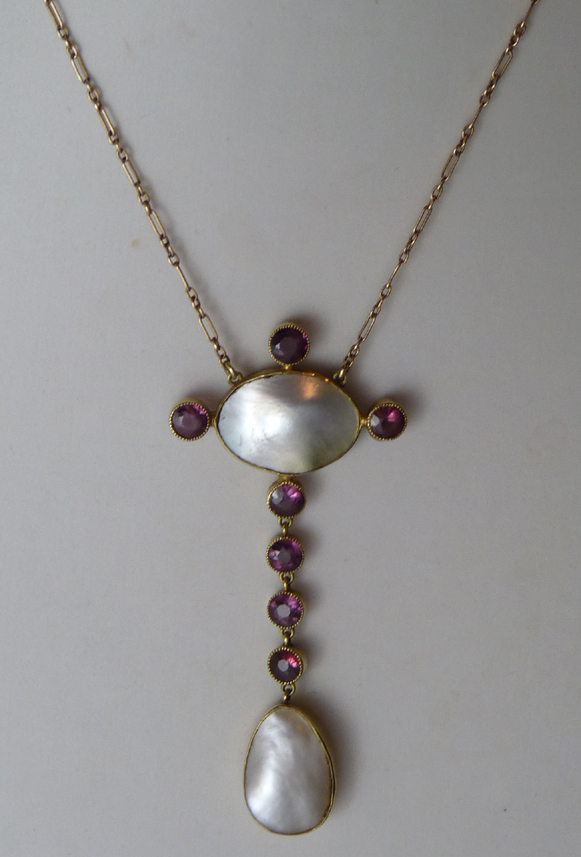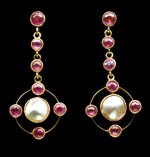kiwipaul
Well-known member
- Joined
- May 21, 2013
- Messages
- 195
Our main area of collecting is Arts & Crafts, Art Nouveau and Art Deco. Our 'Keepers' are usually signed or 'book pieces' that we hope will hold or grow in value.
Jewelry is a relatively recent interest in the last couple of years, and I regularly kick myself for not paying more attention to it sooner.
However we're trying to make up for lost time.
Pearls and their cousins the blister pearl, and mother of pearl feature a lot in 'Art' jewelry. So I'm going to show a few pieces.
This is the first one and I need help with it. It's an Art Deco silver, marcasite and pearl necklace and earrings suite by Theodor Fahrner of Pforzheim Germany.
Fahrner were designers and manufacturers who supplied prestige retailers, including Liberty & Co, and their pieces are usually exquisitely made.
Look for example at the detail of the chain links and the textured earrings. There is a special name for the fine textured lines on the earrings - 'millegriff'.
Fahrner were at the forefront of fashion from 1900 to the 1930's and then the company resurrected after WWII before going under in the 1970's.
This suite probably dates from the late 1940's to early 1950's, and all the pieces have the Fahrner "TF in a circle" logo.
My question for the Forum relates to the pearl in the necklace. Have you ever seen a cultured pearl of this size and quality from the 1950's or earlier?
It's gritty to the tooth, 9.15mm in diameter. highly lustrous, blemish free to the naked eye, with pink overtones.
Fahrner were certainly big enough and well placed to source any commercial gems available, but were cultured pearls like this available in the 50's?
I'm absolutely sure it's a 'real' pearl (not faux/fake), and I'm thinking it's very large for a cultured pearl of that period. What do you think?
Jewelry is a relatively recent interest in the last couple of years, and I regularly kick myself for not paying more attention to it sooner.
However we're trying to make up for lost time.
Pearls and their cousins the blister pearl, and mother of pearl feature a lot in 'Art' jewelry. So I'm going to show a few pieces.
This is the first one and I need help with it. It's an Art Deco silver, marcasite and pearl necklace and earrings suite by Theodor Fahrner of Pforzheim Germany.
Fahrner were designers and manufacturers who supplied prestige retailers, including Liberty & Co, and their pieces are usually exquisitely made.
Look for example at the detail of the chain links and the textured earrings. There is a special name for the fine textured lines on the earrings - 'millegriff'.
Fahrner were at the forefront of fashion from 1900 to the 1930's and then the company resurrected after WWII before going under in the 1970's.
This suite probably dates from the late 1940's to early 1950's, and all the pieces have the Fahrner "TF in a circle" logo.
My question for the Forum relates to the pearl in the necklace. Have you ever seen a cultured pearl of this size and quality from the 1950's or earlier?
It's gritty to the tooth, 9.15mm in diameter. highly lustrous, blemish free to the naked eye, with pink overtones.
Fahrner were certainly big enough and well placed to source any commercial gems available, but were cultured pearls like this available in the 50's?
I'm absolutely sure it's a 'real' pearl (not faux/fake), and I'm thinking it's very large for a cultured pearl of that period. What do you think?
Last edited:


